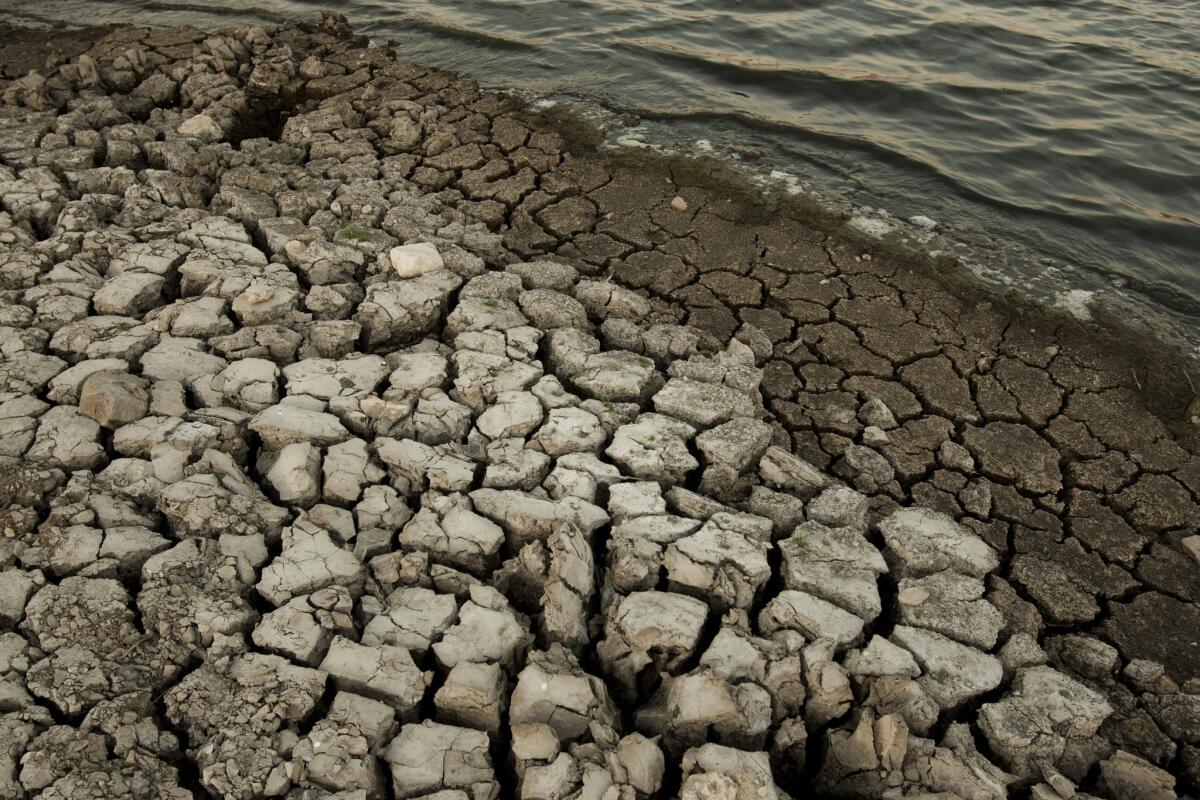California drought and climate warming: Studies find no clear link

- Share via
Global warming contributed to extreme heat waves in many parts of the world last year, but cannot be definitively linked to the California drought, according to a report released Monday.
The third annual analysis of extreme weather events underscored the continuing difficulty of teasing out the influence of human-caused climate change on precipitation patterns.
One of three studies examining the California drought in 2013 found that the kind of high-pressure systems that blocked winter storms last year have increased with global warming.
But another study concluded that a long-term rise in sea surface temperatures in the western Pacific did not contribute substantially to the drought. And researchers noted that California precipitation since 1895 has “exhibited no appreciable downward trend.”
Overall, the report editors concluded that the papers didn’t demonstrate that global warming clearly influenced the drought, which is one of the worst in the state record.
In the report, published in the Bulletin of the American Meteorological Society, 20 research teams explored the causes of 16 extreme weather events recorded in 2013, including torrential downpours in Colorado, heat waves in Korea and Australia and a blizzard in South Dakota.
The studies overwhelmingly showed that human-caused climate change played a role in the heat waves, in some cases making them 10 times more likely.
But the report editors wrote that “natural variability likely played a much larger role in the extreme precipitation events,” whether it was flooding in India, deep snow in the Spanish Pyrenees Mountains or the California drought.
Last year’s exceedingly dry winter in California was largely the result of a stubborn high pressure system parked over the northeastern Pacific Ocean. Nicknamed the Ridiculously Resilient Ridge, by Stanford University researcher Daniel Swain, the system shunted winter storms far to the north, off their normal path to California.
Those sorts of high-pressure systems “are considerably more likely to occur” with global warming, said Swain, lead author of one of the three California papers. “It suggests an increased likelihood of the kinds of large-scale atmospheric conditions that are conducive to drought in California,” he added.
But Marty Hoerling, co-editor of the climate report and a research meteorologist with the National Oceanic and Atmospheric Administration, noted that high-pressure systems have increased everywhere. What drives storms is the difference in atmospheric pressure over the north and south Pacific, he said, and that was not examined in the Swain paper.
Researchers concluded in a third paper that while long-term warming contributes to storm-diverting high-pressure systems over the northeast Pacific, that is countered by an increase in atmospheric humidity that can promote wetter weather in California.
Comparing the periods of 1871-1970 with 1980-2013, the authors wrote that there was “no appreciable long-term change in the risk for dry climate extremes over California since the late 19th century.”
Twitter: @boxall







